The low-key effect is a popular technique in photography that is often used to create dramatic and atmospheric images. It creates a high contrast between light and dark areas, giving the image a special expressiveness. In this tutorial, I will show you how to apply this effect using Adobe Photoshop. You don't need much more than a good original image and some basic Photoshop skills. Let's get started!
Main Takeaways
To achieve an impressive low-key effect, you should:
- Play with brightness and contrast.
- Isolate your subjects and adjust the background.
- Use gradients and masks for targeted adjustments.
- Add black and white corrections to enhance the dramatic effect.
Step-by-Step Guide
First, you need to load your image into Photoshop. Open Photoshop and load the photo you want to edit, either by clicking "Open" or by dragging the photo into the program.
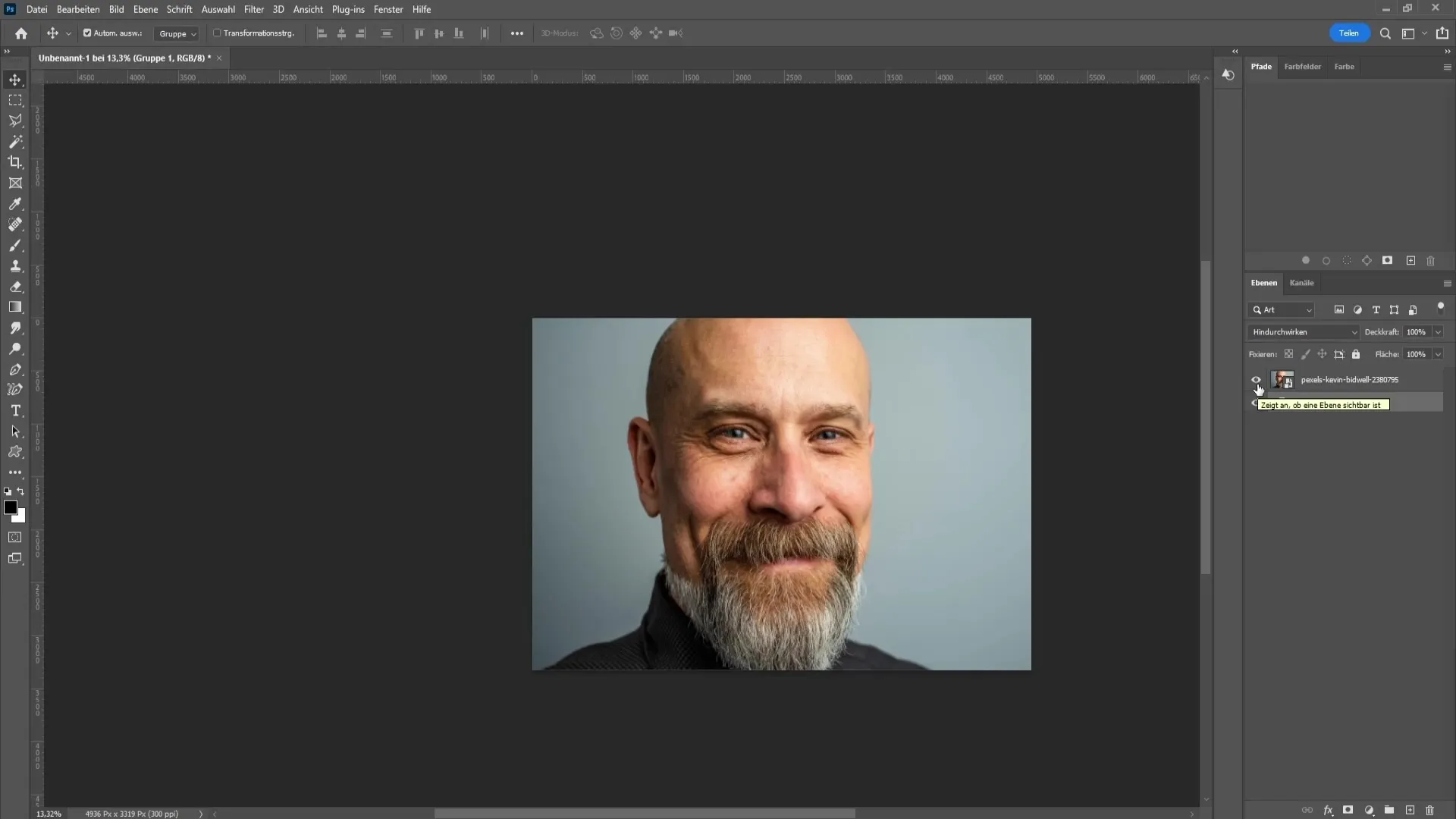
Next, go to the adjustments located at the bottom right of the interface. Choose “Brightness/Contrast Adjustment”.
The Properties window should now appear. Here, you can drag the brightness slider down further, to about -27, to enhance the dark tones. Increase the contrast to around 27 to bring more depth to your image.
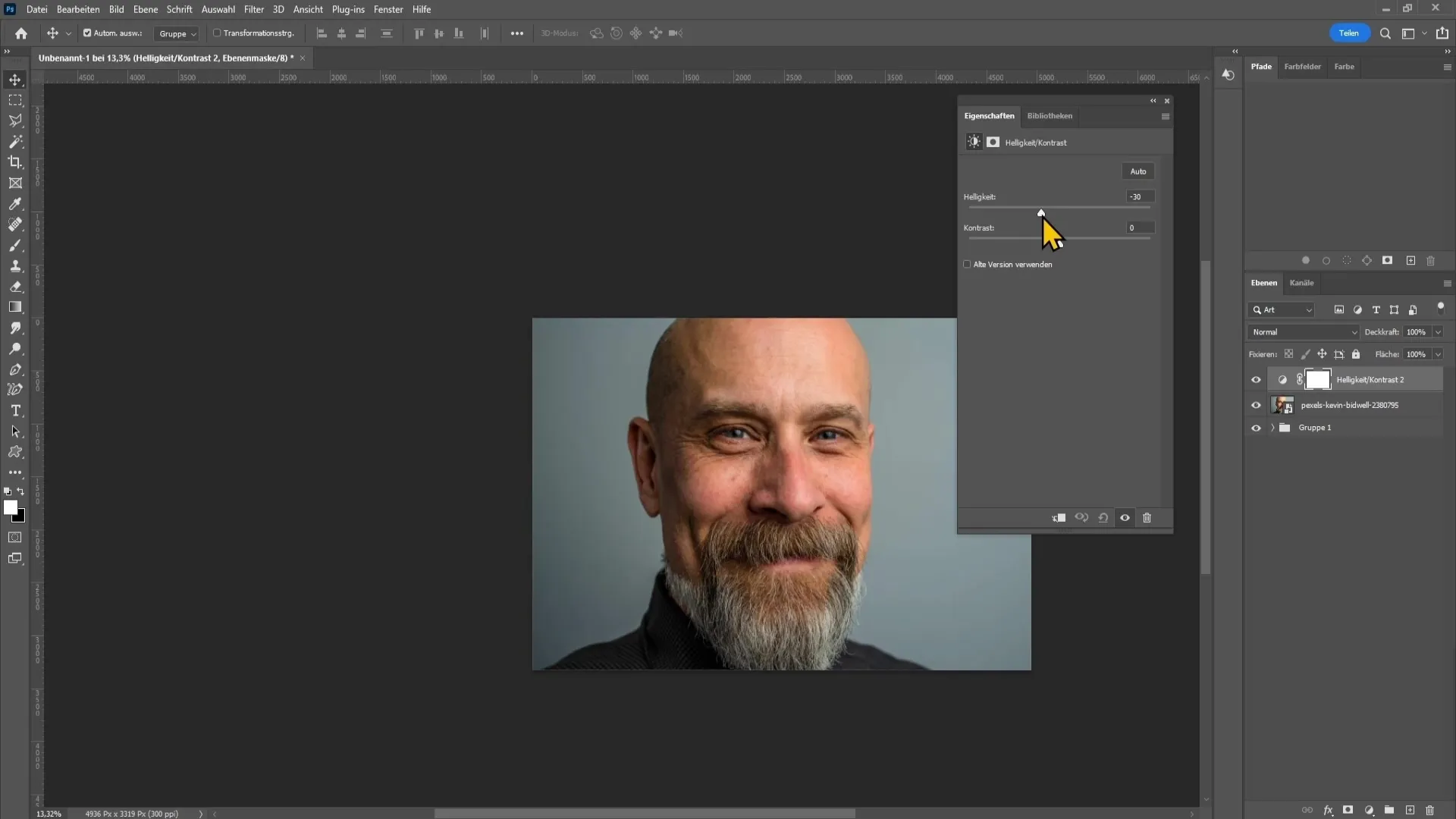
After applying these initial adjustments, you can close the Properties window. Now, you should merge the two correction layers together. This is easily done by using the shortcut “Ctrl + Alt + Shift + E”. This simplifies your layer management.
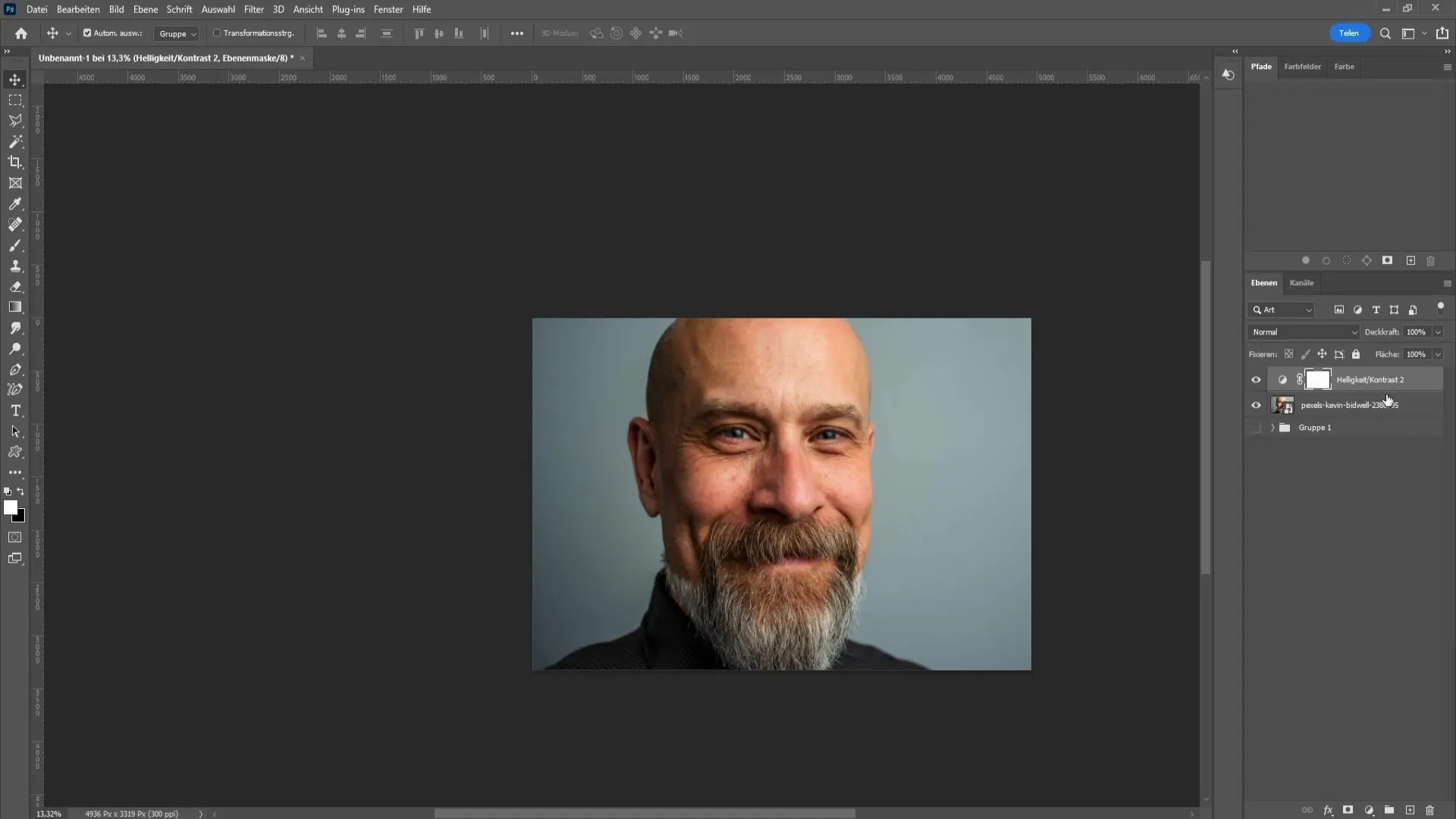
If you wish, you can hide or even delete the underlying areas of image editing. You are now focusing on the newly merged layer. To isolate your subject, press “Ctrl + J” to create a copy of the layer.
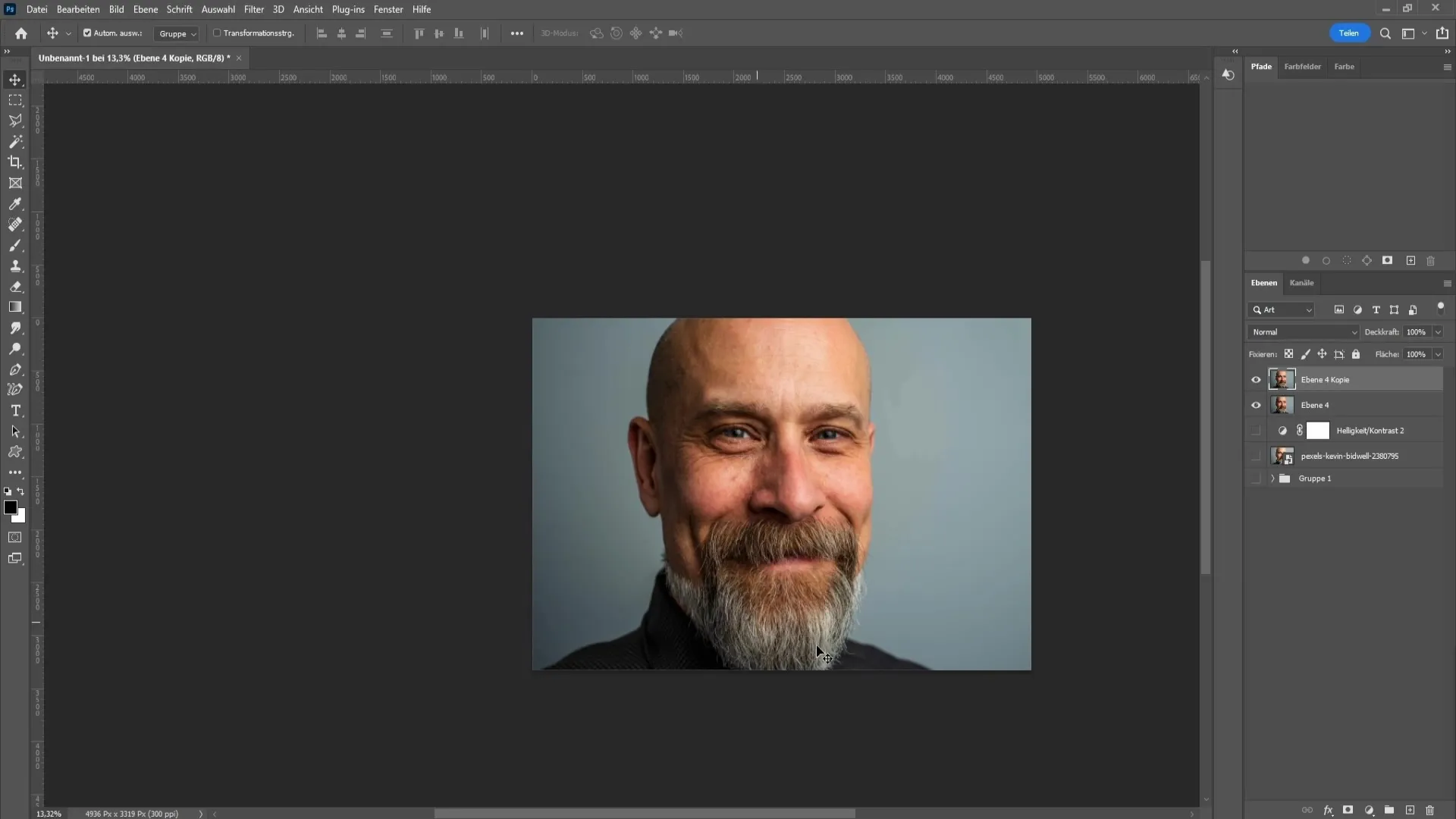
For isolation, you can use the “Subject Selection” tool available in newer versions of Photoshop. This will automatically create a selection for your main subject.
If you are using an older version of Photoshop, you can use the Quick Selection Tool to outline your subject. Then, go to “Select” and “Mask” to refine the selection.
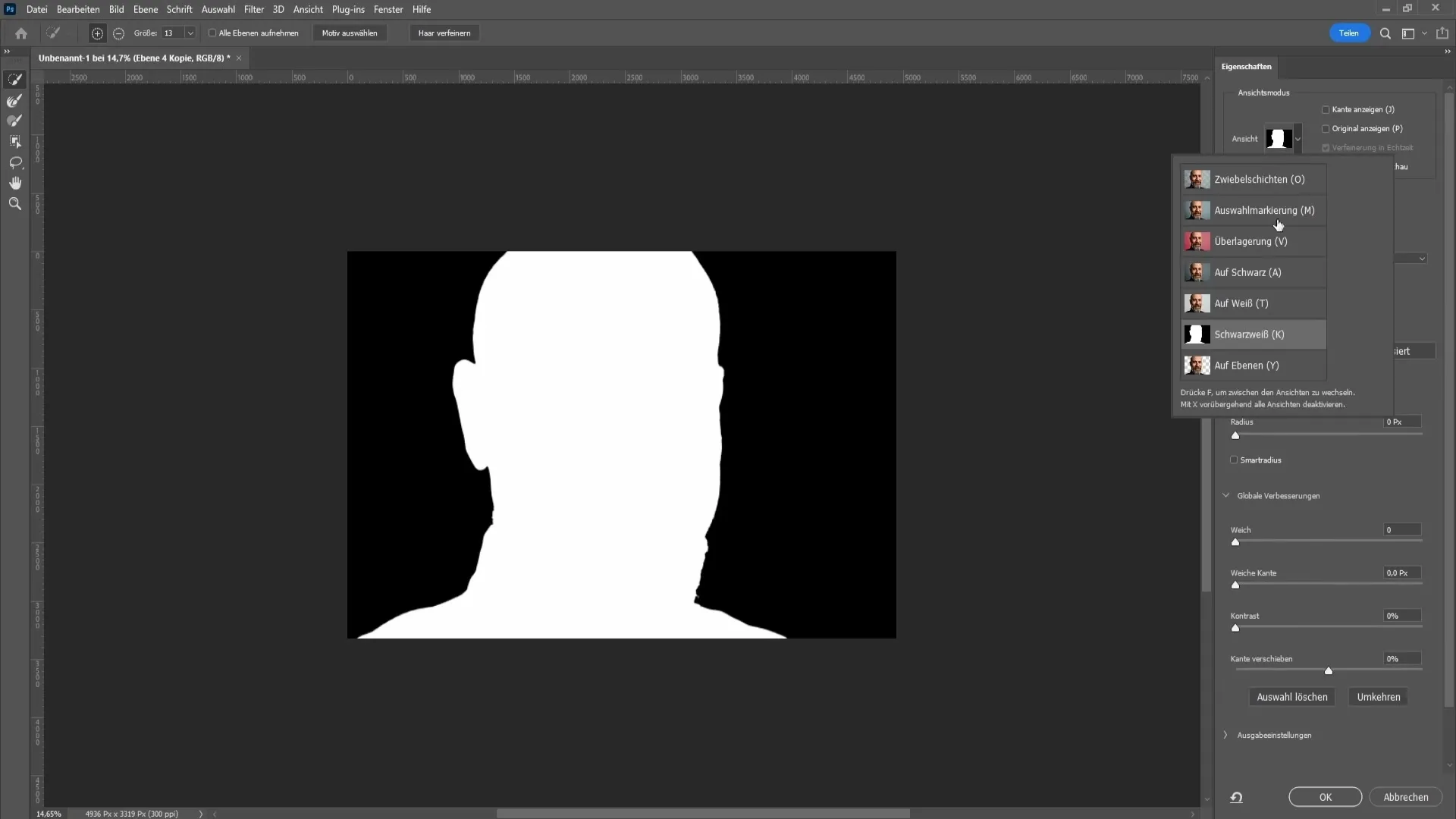
In the Masks window, you can mainly control the view. The selection looks good to me already. To further refine it, you can increase the soft edge and contrast.
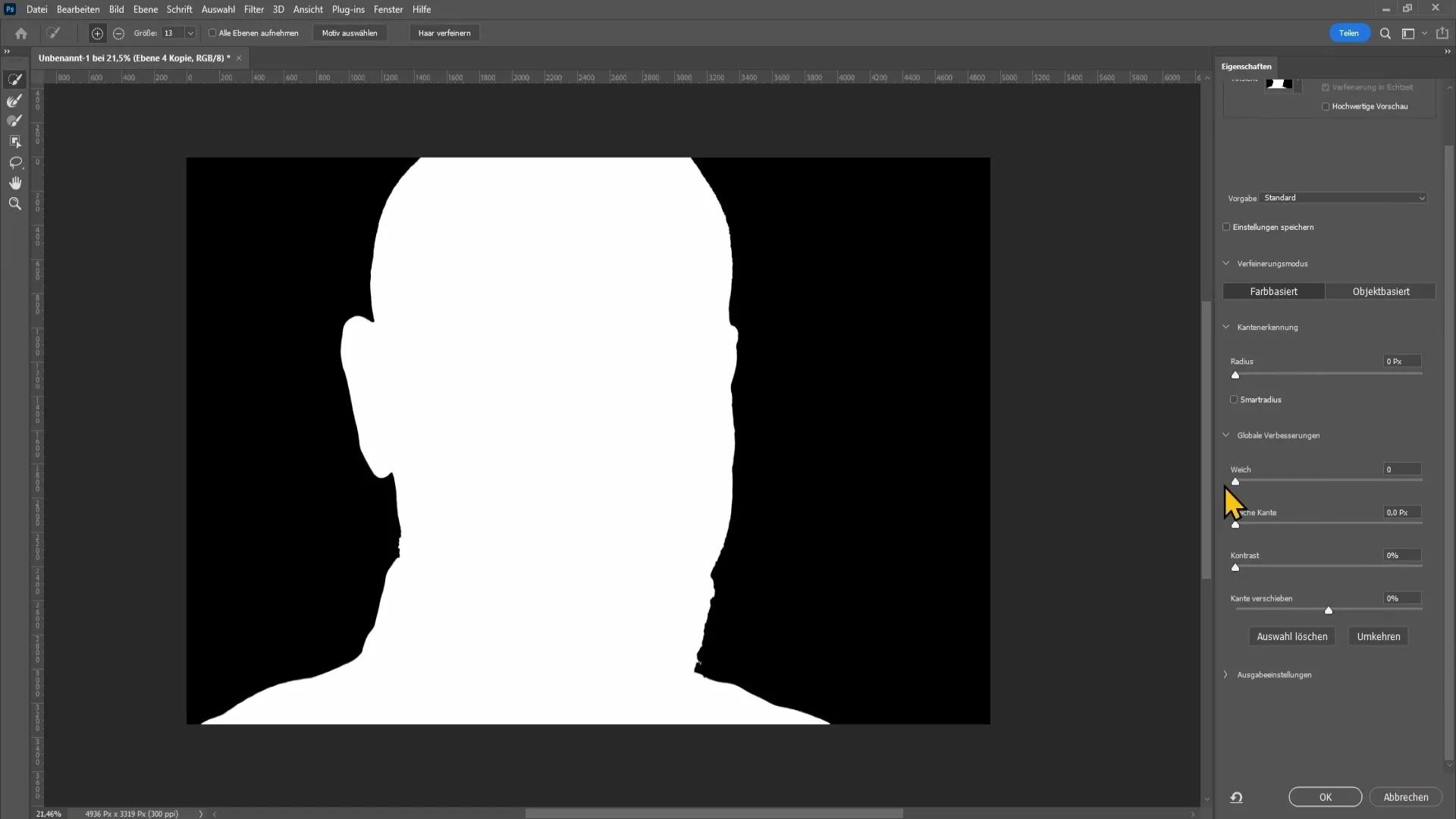
Once you are satisfied with your selection, click “OK” and then click on the Layer Mask icon at the bottom of the Layers panel to confirm your isolation.
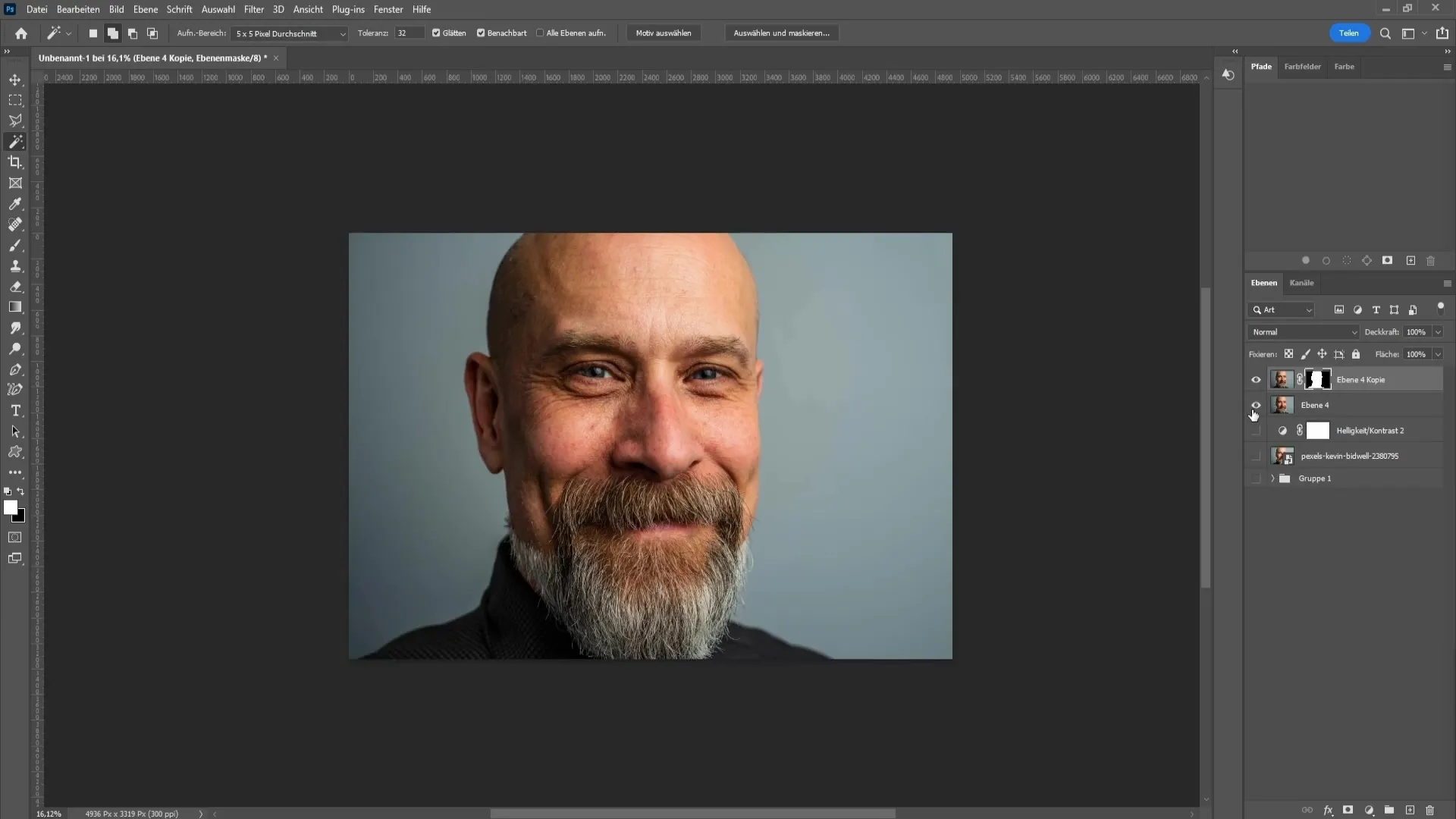
You have now isolated your subject. To darken the background, click on the layer below and add a solid fill - choose black for that.
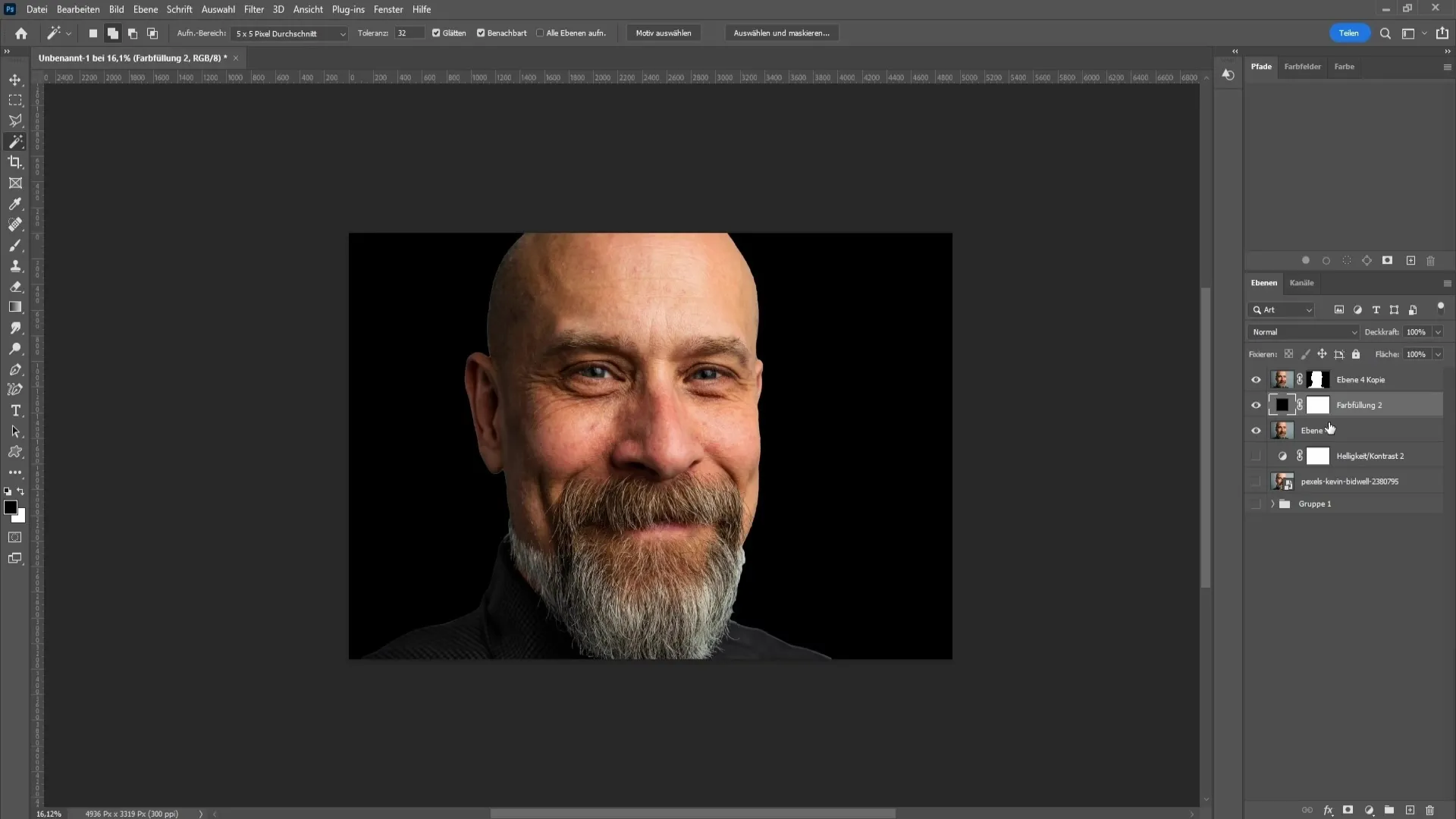
However, the real magic of the low-key effect happens when you add a gradient adjustment. Drag this into the corrections and choose a black and white gradient.
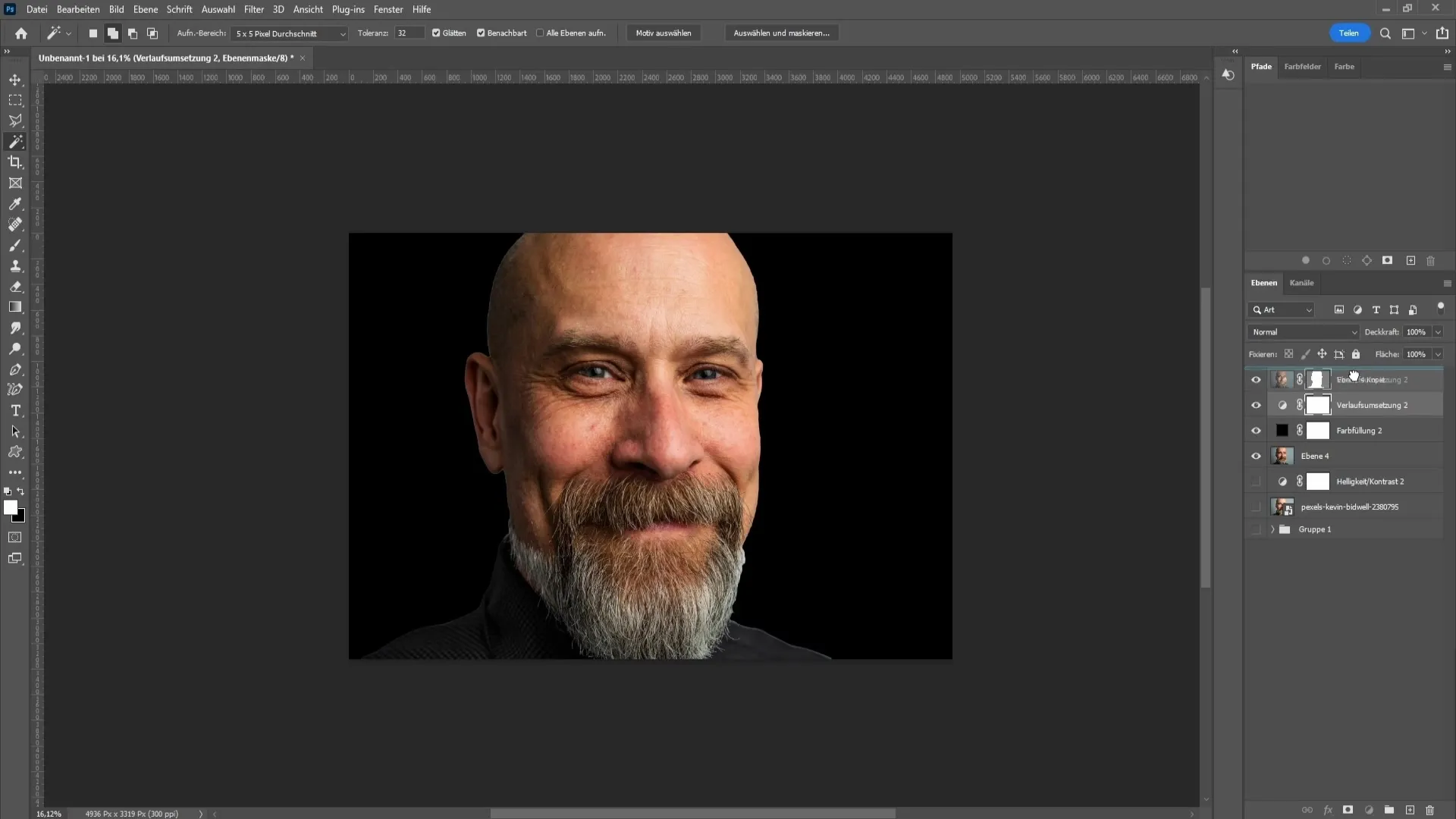
To intensify the look, click on “Reverse” in the gradient adjustment so that the dark area is in the foreground and the light areas are in the background.
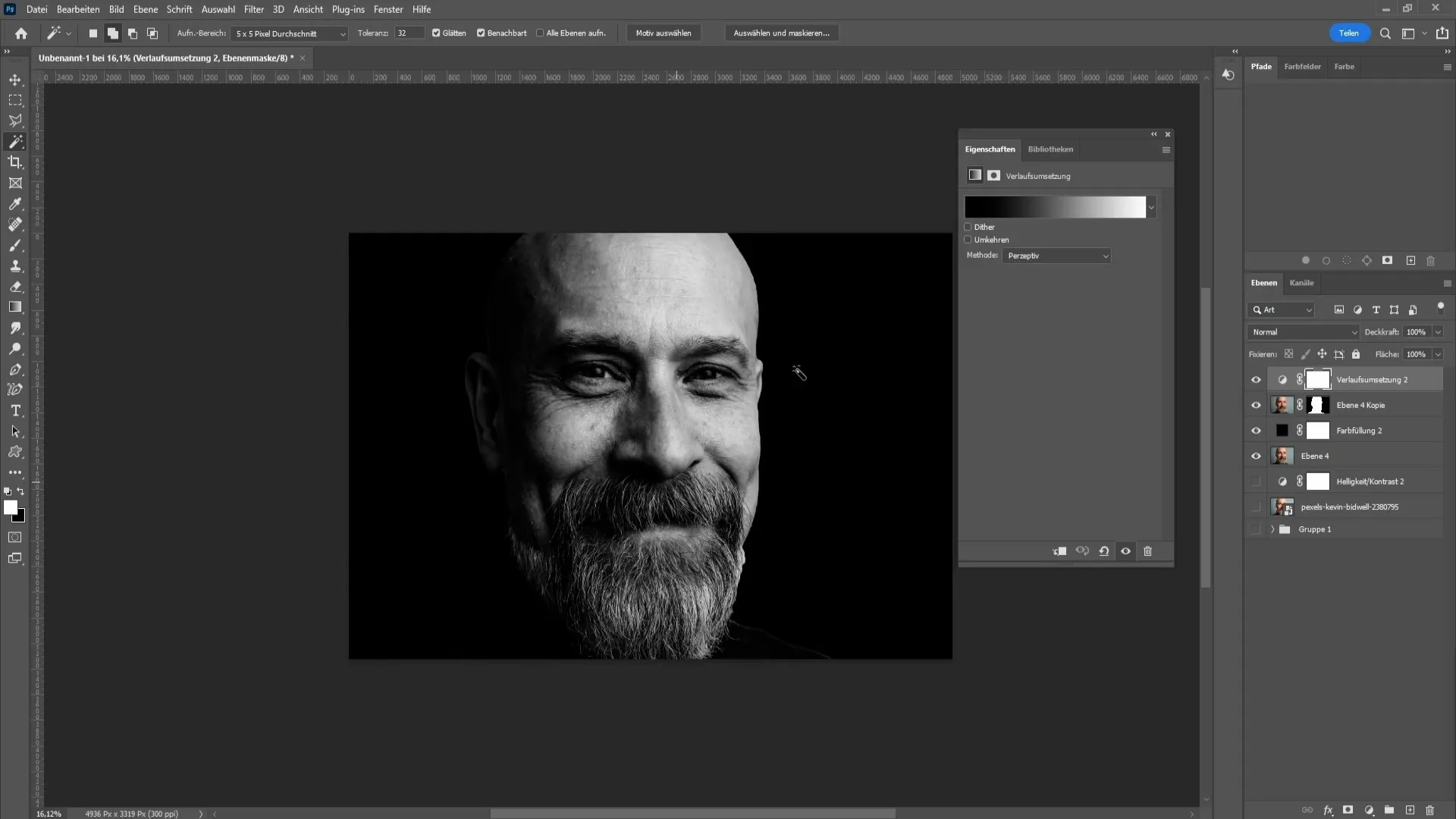
Now we add a tonal correction. Drag the left slider to the right to darken the bright areas further. This gives you control over the light in your image.
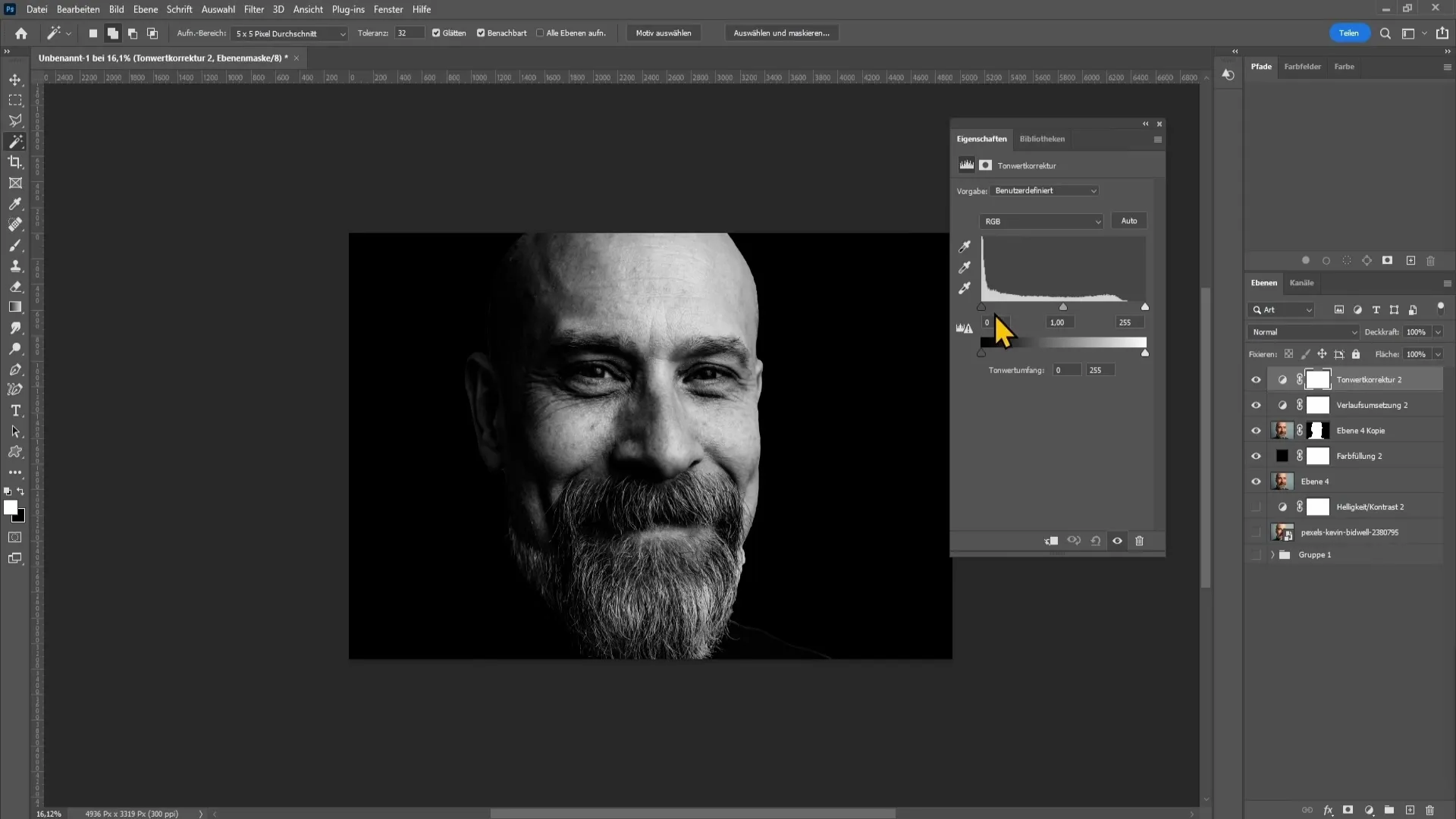
With the middle slider, you can also further adjust the midtones to achieve the desired result. Experiment here to get the best possible outcome.
If you notice that some details, such as the ear or eyes, are too dark, you can lighten them again afterward by adjusting the sliders.
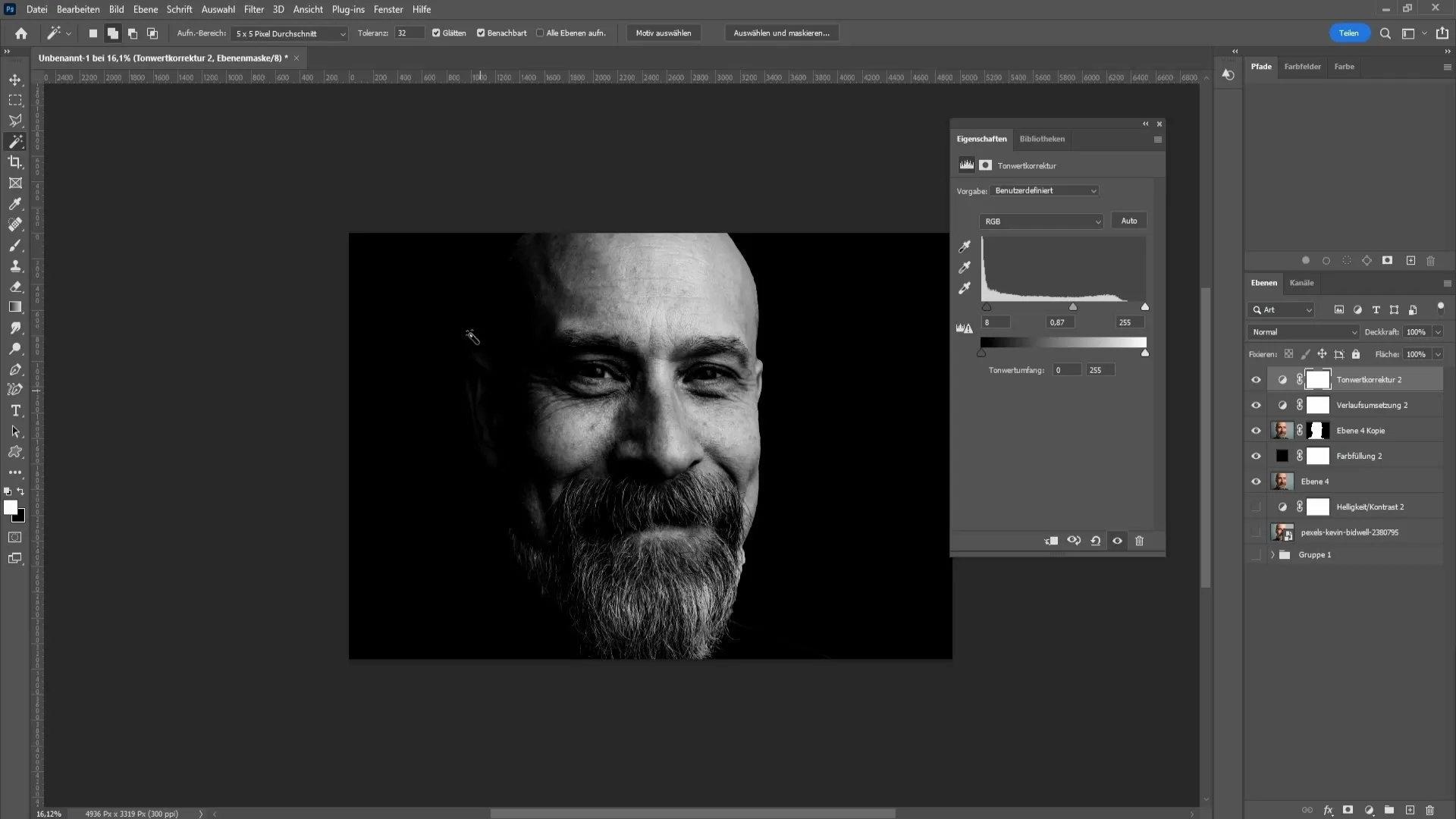
Now create a new empty layer. Here you can darken or lighten specific areas of your image using the gradient tool.
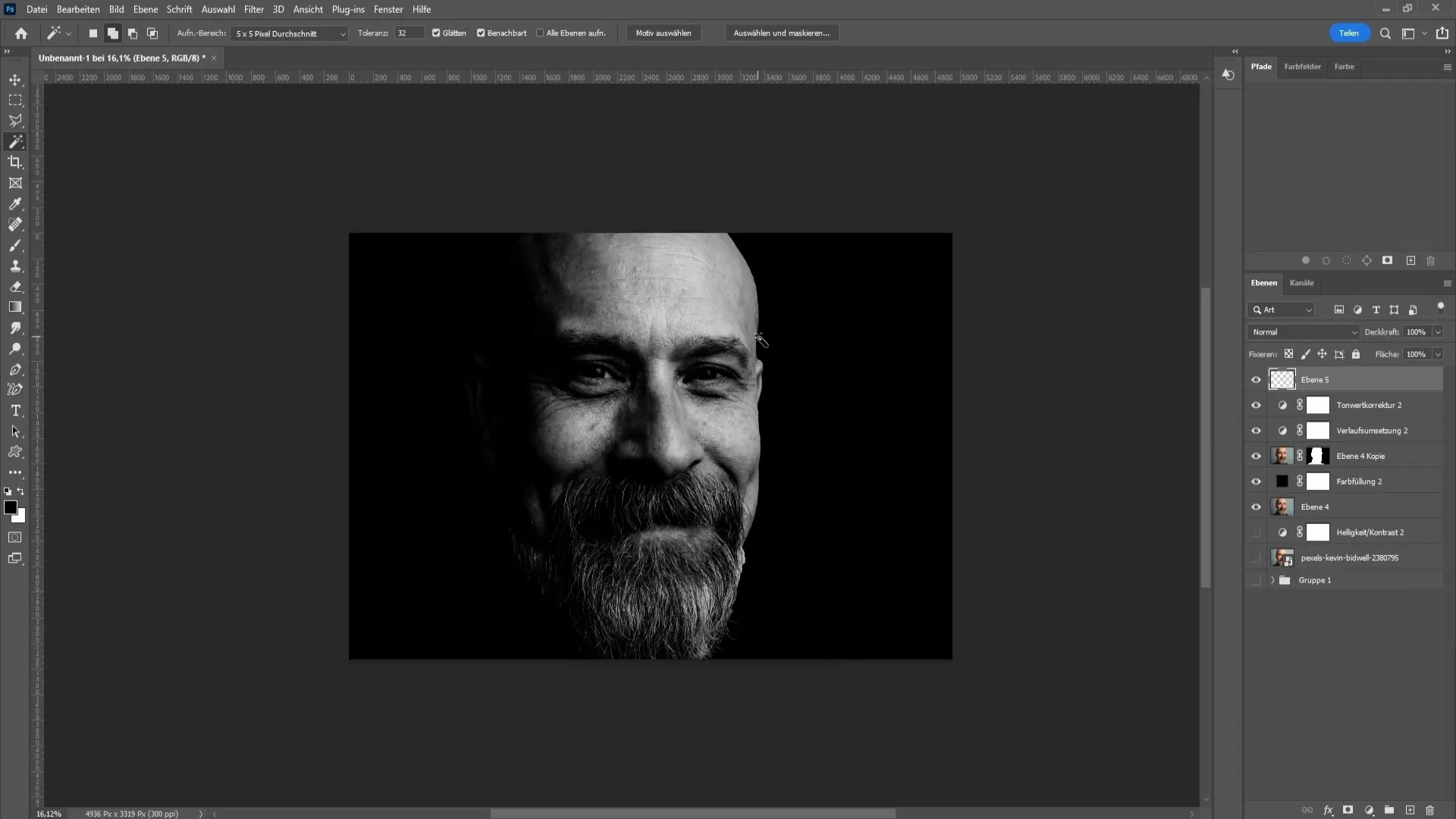
Select the linear gradient tool and use a gradient from black to transparent. Make sure the foreground color is set to black. Press "D" to reset to default settings if necessary.
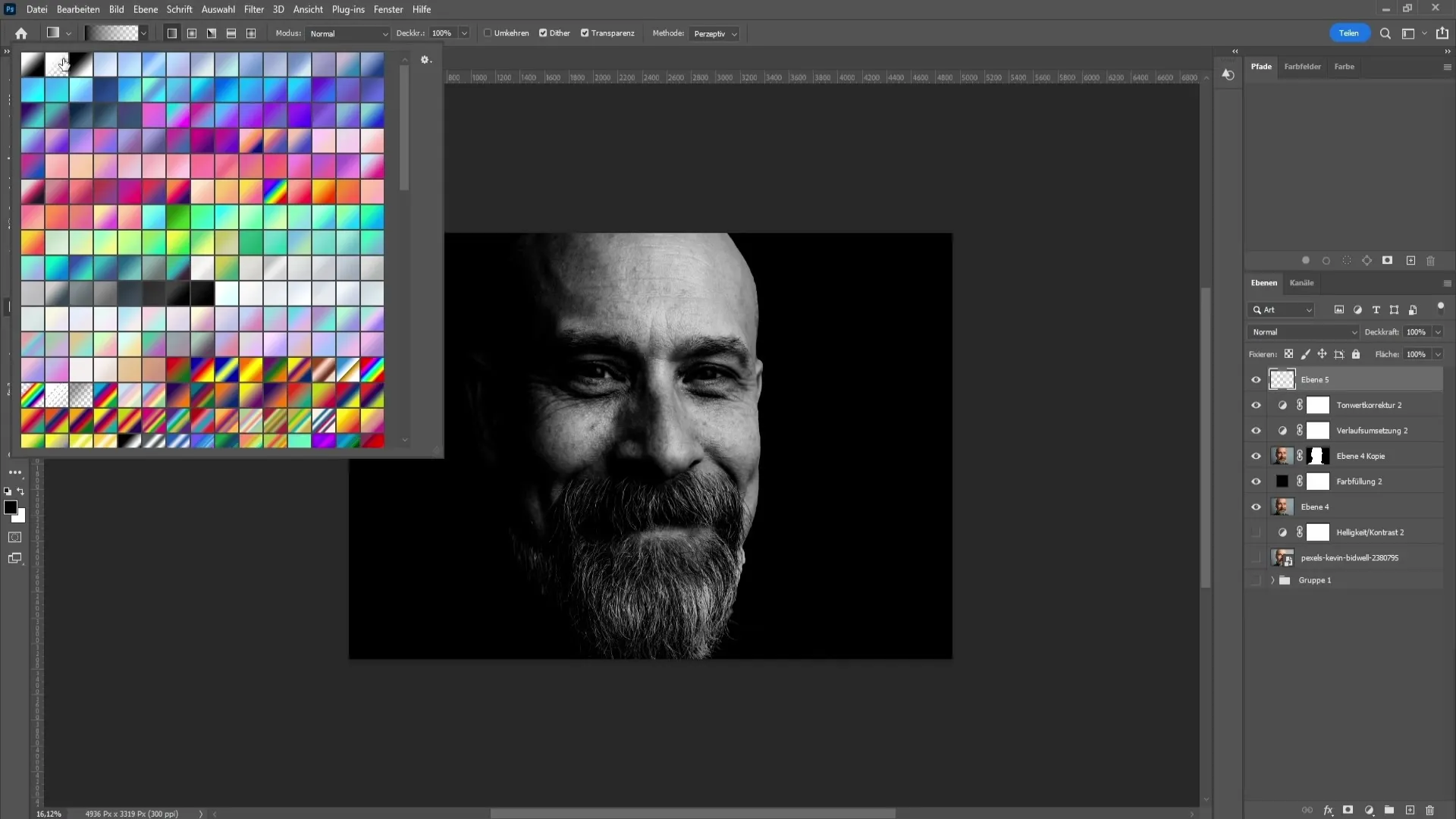
Drag from right to left to darken the area accordingly. If you find the effect to be too strong, you can reduce the opacity.
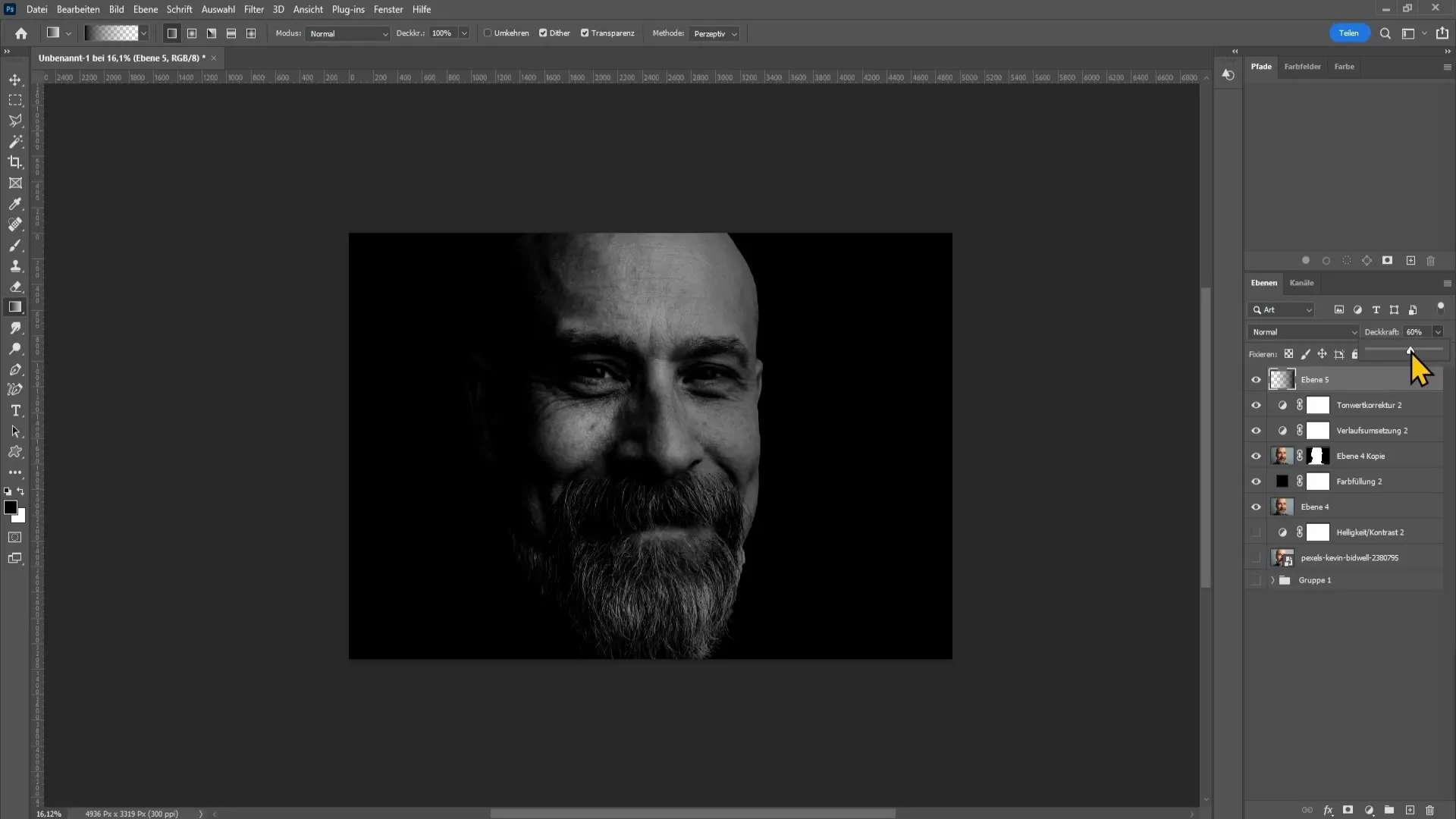
Alternatively, we will create a layer mask to make further adjustments. Using a round, soft brush, you can gently paint over the desired areas.
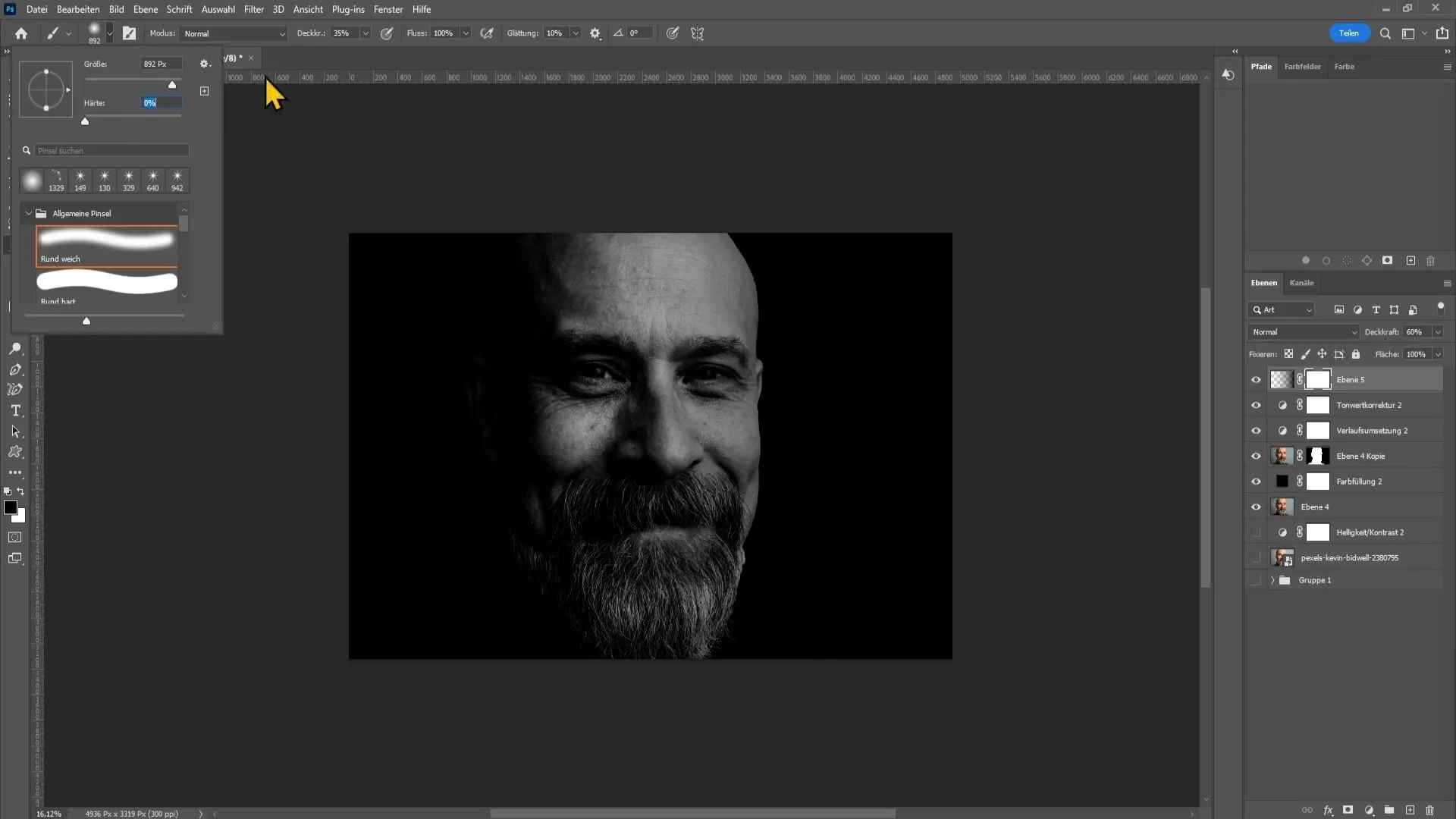
By changing the foreground color to white with "X," you can now bring back details in your mask. Make sure not to add any color if you want to maintain the black and white effect.
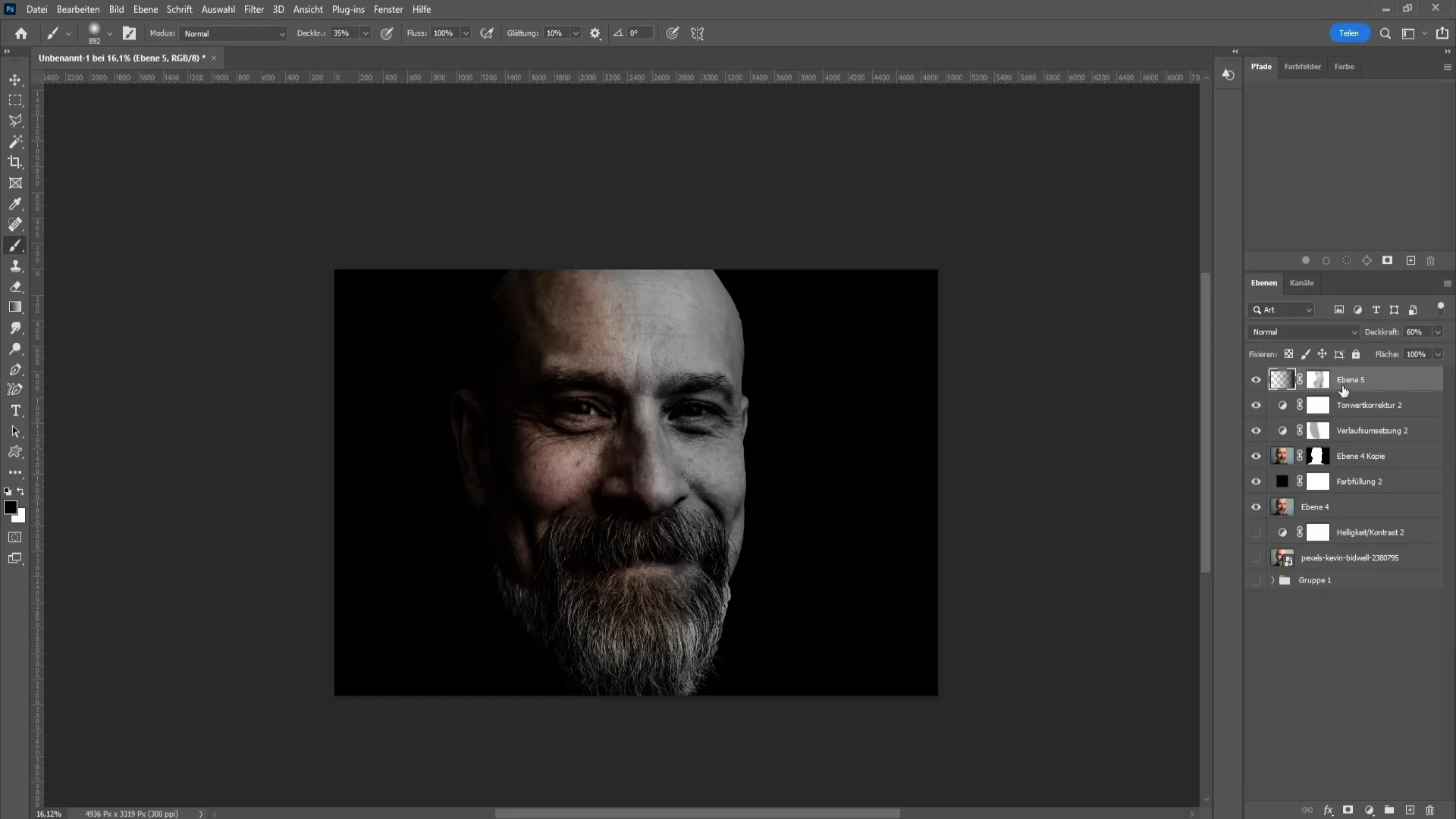
If you want to enhance the effect further, go back to the tonal correction and adjust the sliders to increase the contrasts.
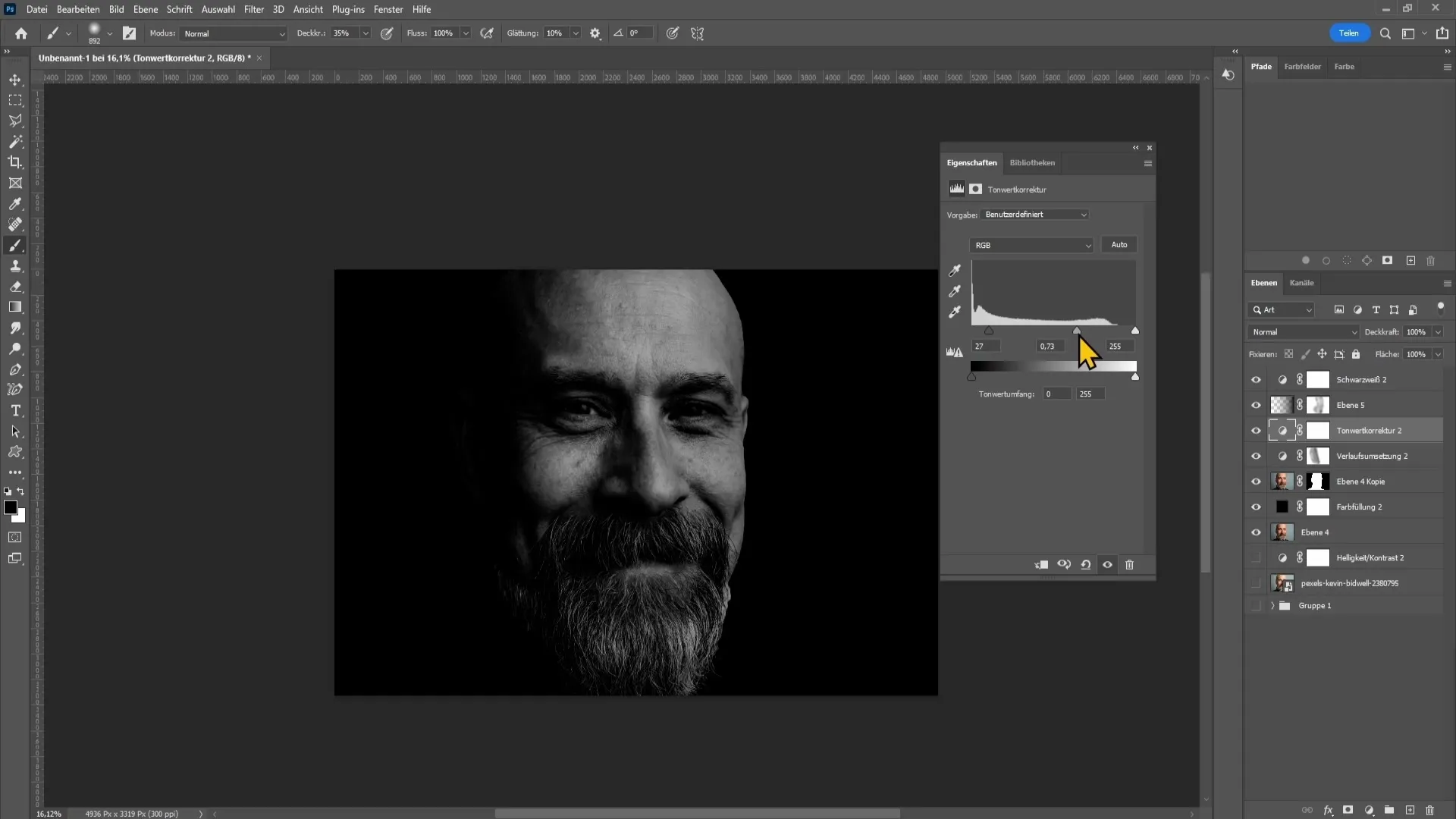
Summary
Applying the low-key effect in Photoshop can add a dramatic touch to your photos. By making targeted adjustments in brightness, contrast, composition, and using gradient and masking techniques, you can achieve remarkable results.
Frequently Asked Questions
How do I create a low-key effect in Photoshop?By adjusting brightness and contrast, making targeted selections, and using gradient overlays.
What do I need for the low-key effect?A suitable photo in Photoshop, basic knowledge of the software, and some creativity.
Can I use older versions of Photoshop?Yes, you can use the quick selection tools and masking even if "subject select" is not available.
What type of image material should I use?Ideally a portrait or a shot with well-defined light and shadow areas.


